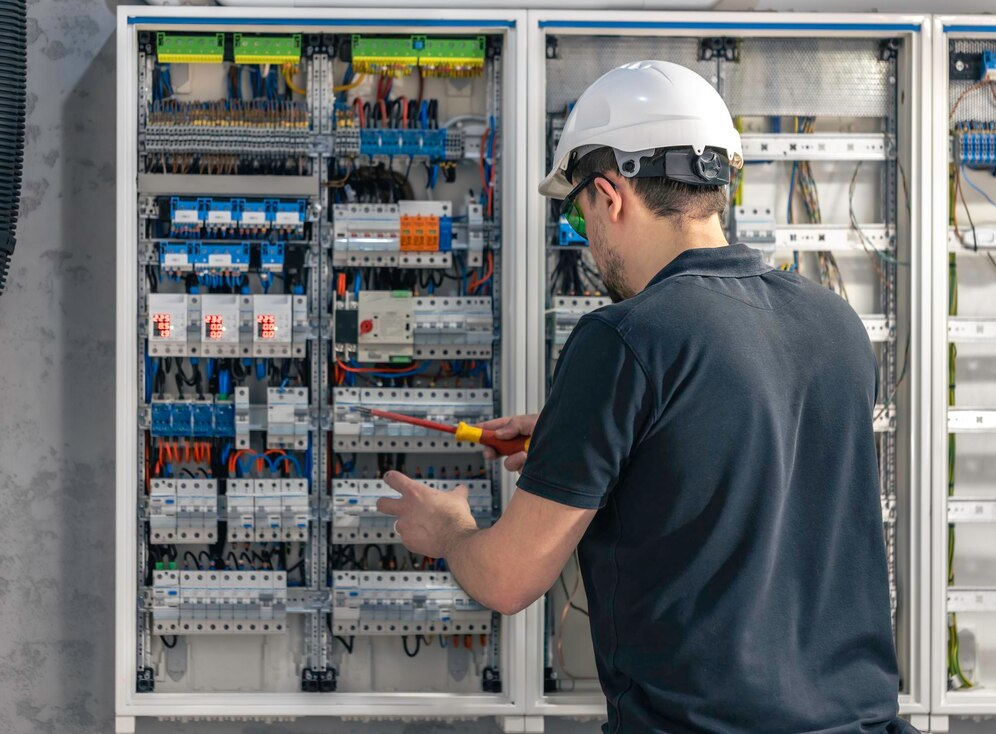Have you considered how today’s manufacturing systems inexplicably connect and communicate through different machines and devices?
It is in these industrial switches where the answers lie.
They are the uncelebrated champions of modern-day smart factories that coordinate data and power flow between machines, allowing for real-time communication and integration of entire systems within the production line.
Automating processes, improving the network, or elevating the entire system’s reliability, industrial switches have proven, time and again, their importance in the future of manufacturing.
Given the ability to manage high traffic volumes, remote control, and provide efficiency, these devices become essential in the industrial domain.
Be sure to read until the end to understand these switches’ impact on the industry fully and why they are so significant in today’s advanced technology landscape.
1. The Reliability and Robustness of Industrial Switches
Industrial switches are built for the most challenging applications, with heavy-duty reliability guaranteed no matter how tough the conditions. They’re built to survive the hot and cold extremes, constant vibration, and electromagnetic interference to keep your network up and running no matter what.
Not only that, but a majority of these switches also have high redundancy abilities such as ring topologies or link aggregation, which make the entire network self-healed in case of system failure and flawless running.
Therefore, there is hardly any downtime, which becomes extremely critical to companies where time is money. Imagine how efficiently the production line will be running due to these switches’ high reliability.
They’re made of very robust material, and they recover very quickly if interrupted. Thus, using the industrial switch is the best way to maintain network operations in harsh environments.
2. Simplifying Installation with Power Over Ethernet (PoE)
With Power over Ethernet (PoE) support, your industrial switches can handle more than just network traffic. They can even supply power to devices such as IP cameras, wireless access points, and sensors via the Ethernet cable.
This reduces the need for individual power supplies, making your installation easier and lessening cable clutter in your factory. You also save time and resources in the process.
In addition, PoE supplies your devices with power even in the remotest areas, simplifying equipment placement throughout your building without extra power sources. Further, by providing both power and data transmission through one cable, PoE increases flexibility to allow you to locate devices where they are most helpful.
Maintenance is cost-saving in the long term and generally makes your network more efficient. In short, industrial switches powered by PoE are a convenient, cost-efficient way of powering and networking your devices.
3. Ensuring Real-time Communication for Efficient Operations
For smooth operation, there has to be timely communication in modern manufacturing systems. Industrial switches with TSN compliance ensure that critical data is delivered promptly, which is essential for process control and safety monitoring.
With these switches, your processes and machines will work under the strict timing needs necessary for optimal production. In addition, industrial switches minimize latency to offer faster response times for high-speed control.
By low-latency communications, your network processes data instantly, reducing delay time and speeding up manufacturing systems. Real-time communications render your environment highly responsive and synchronized.
By means of this, your machines can respond in real-time to production needs, ensuring your factory is operating at its best with minimal delay. Using industrial switches, your network can seamlessly accommodate the demands of high-speed operations.
4. Enhancing Network Security with Advanced Features
Due to the connectivity and interdependence, modern manufacturing systems significantly demand a secure network. Industrial switches provide various security features to defend the network from potential threats.
Features in industrial switches include encryption that lays a firewall against unauthorized access and cyberattacks. It makes security a priority as the plant starts depending more on digital infrastructure.
This feature aims to reduce risks associated with sensitive operations and the increasing volume of data. Industrial switches also allow for the segmentation of the network into smaller isolated zones.
This helps protect critical machinery and control systems when divided from less secure areas. By isolating and segmenting parts of the network, the attack surface is reduced, ensuring that vulnerabilities in one area do not affect the entire system.
5. Continuous Monitoring and Predictive Maintenance
Industrial switches are essential for monitoring and keeping your network functioning in real time. Most of them have advanced management features that enable you to monitor network traffic, device status, and possible faults.
By monitoring these, you can undertake predictive maintenance that keeps the chances of sudden downtime low and helps rectify issues before the system goes offline.
Moreover, industrial switches also support integrating devices, which are utilized in modern manufacturing for predictive maintenance, inventory management, and machine learning.
These devices constantly feed data, which is processed and managed through the switches, maintaining the complete ecosystem.
Equipped with monitoring functionalities, industrial switches also make your network easier to maintain and confirm your network issue-free, permitting your factory to function with decreased downtime and improved output.
Conclusion
Industrial switches are the behind-the-scenes workhorses driving production today, driving your gear to its limits. They’ve got it all plugged in, secured, and running smoothly.
Power over Ethernet, lightning-fast real-time communications, and impenetrable security future-proof your production and decrease cost-sucking downtime. Seamless device bridging allows them to bring in predictive maintenance and avoid crashes.
As your factory progresses, factory switches will be waiting in their wake—facilitating unproblematic, trouble-free operation and allowing you to remain in the lead. The future of manufacturing is built on integration, and it all starts with these switches!


